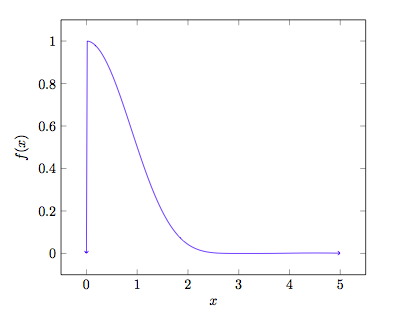Advanced Integration

Evaluate
∫ 0 ∞ x 4 sin 4 x d x .
Details and assumptions
You may use the fact that ∫ 0 ∞ x 2 sin 2 x d x = 2 π .
The answer is 1.04719.
This section requires Javascript.
You are seeing this because something didn't load right. We suggest you, (a) try
refreshing the page, (b) enabling javascript if it is disabled on your browser and,
finally, (c)
loading the
non-javascript version of this page
. We're sorry about the hassle.
1 solution
Nice Solution :)
By cauchy did you mean residue theorem
The integral can be found by 2 π × Λ ( x ) ∗ Λ ( x ) at x = 0 and equals 3 π .
Log in to reply
what is A(x)?
Log in to reply
Λ ( x ) not A(x) and it is triangular function function and * is convolution .
what do you mean by ' using cauchy'?
hahahaha i still have years of learning
Fantastic!! +1
i solved it by first method only :D.... i didn't understand the second one.... but nice effort fariz (Y)
ya good.. my solution for appoximate answer : we can see from graph let assume it's triangle : 1/2(base) (height) = 1/2 (2)*(1) = 1 approx
nice........
By integration by parts we may obtain
∫ x 4 sin 4 x d x = − 3 1 x 3 sin 4 x + 3 4 ∫ x 3 sin 3 x cos x d x = − 3 1 x 3 sin 4 x − 3 2 x 2 sin 3 x cos x + 3 2 ∫ x 2 3 sin 2 x cos 2 x − sin 4 x d x = − 3 1 x 3 sin 4 x − 3 2 x 2 sin 3 x cos x + 3 2 ∫ ( x 2 sin 2 2 x − x 2 sin 2 x ) d x
Hence,
∫ 0 ∞ x 4 sin 4 x d x = 3 2 ∫ 0 ∞ x 2 sin 2 2 x d x − 3 2 ∫ 0 ∞ x 2 sin 2 x d x = 3 2 ∫ 0 ∞ x 2 sin 2 x d x = 3 π
Then, the required answer is 3 π ≈ 1 . 0 4 7
In addition, this is the generalization of ∫ 0 ∞ ( x sin x ) n d x
∫ 0 ∞ ( x sin x ) n d x = ϵ → 0 + lim 2 1 ∫ − ∞ + ∞ ( x − i ϵ sin x ) n d x = ϵ → 0 + lim 2 1 ∫ − ∞ + ∞ ( x − i ϵ ) n 1 ( 2 i e i x − e − i x ) n d x = ϵ → 0 + lim 2 1 ( 2 i ) n 1 ∫ − ∞ + ∞ ( x − i ϵ ) n 1 k = 0 ∑ n ( − 1 ) k ( k n ) e i x ( n − 2 k ) d x = ϵ → 0 + lim 2 1 ( 2 i ) n 1 k = 0 ∑ n ( − 1 ) k ( k n ) ∫ − ∞ + ∞ ( x − i ϵ ) n e i x ( n − 2 k ) d x
Then, by using Cauchy we obtain
∫ 0 ∞ ( x sin x ) n d x = 2 1 ( 2 i ) n 1 k = 0 ∑ ⌊ 2 n ⌋ ( − 1 ) k ( k n ) ( n − 1 ) ! 2 π i d x n − 1 d n − 1 e i x ( n − 2 k ) ∣ x = 0 = 2 n ( n − 1 ) ! π k = 0 ∑ ⌊ 2 n ⌋ ( − 1 ) k ( k n ) ( n − 2 k ) n − 1
Putting n = 4 we have 3 π ≈ 1 . 0 4 7 as the answer.